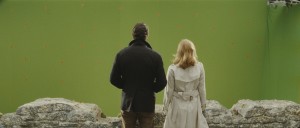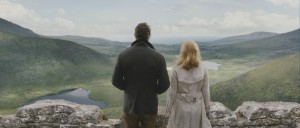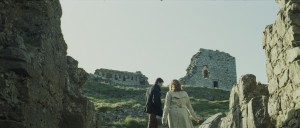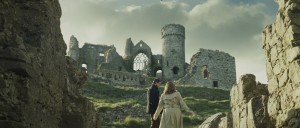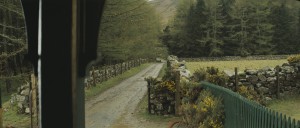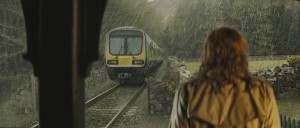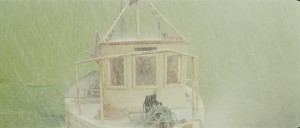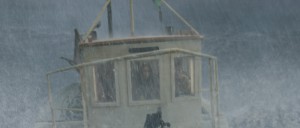Cinesite visual effects supervisor Matt Johnson takes us through the invisible effects of Anand Tucker’s Leap Year, a film in which Amy Adams plans to propose to her boyfriend in Dublin on leap day – Feburary 29th.
fxg: Obviously this isn’t supposed to be a visual effects film at all. What kind of approach did you take the effects work?
Johnson: Well, I think what’s happening more and more is that movies that you wouldn’t have thought were visual effects movies are now using the same techniques seen in much bigger films in order to expand on the story. This movie takes place in Ireland and Boston. For production purposes, the movie was primarily shot in Dublin and it was better for them to focus their work there. What might have happened in the past is that you’d take a separate unit and shoot in Boston, and then come back. But of course that costs money to take crew and actors. Plus it needed to be in the snow in Boston but the movie was being shot in the Summer.
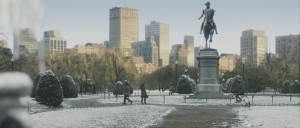 fxg: So how did you end up acquiring the Boston scenes?
fxg: So how did you end up acquiring the Boston scenes?
Johnson: Most people would be familiar with the idea of shooting a background plate and then shooting a matching bluescreen element and comping those together. But that means you still need to send a full plate unit over to film the backgrounds and potentially have extras in there. For Leap Year, rather than sending an entire film crew, we sent two guys from Cinesite with a digital stills camera and a stills camera tripod to Boston who could go to all the locations without having to close them off and pay for extras and all that stuff. They could go to a lot of different places in a short period of time. If there happened to be a person in the background we knew there wouldn’t be a problem with clearances or anything because we could paint them out and start with a clean plate. So our approach was to shoot stills rather than live action film.
These stills were shot in late Spring/early Summer but the scene takes place at a crucial plot point time of Winter. Having the stills allowed us to take a more matte painting approach in terms of painting out unwanted people and also changing environments, like taking the leaves off trees and adding in snow. Then, when we were shooting in Ireland, we were able to very quickly shoot a whole bunch of scenes. We had one stage in the studio which was an easy thing to control from a production point of view. We would get Amy Adams to walk through on a greenscreen and that was the filming done.
Then we had about 30 different extras and set up a production line going. We’d set up a wide shot from a particular angle and I’d get 30 different people to stand on the spot pretending to read newspapers or drink coffee. They’d go off, change their outfits and come back and do some different actions. So we were able to populate the park and dock area of Boston with about 30 people just with different hats and coats, move them from place to place or scale them down. What should have taken at least a week on location, we shot it in a day and a half and left the rest to compositing.
fxg: What were the tools you used to bring these shots together?
Johnson: The comps were done using a combination of Nuke and Shake. The background images were created in Photoshop, but in order to create a sense of parallax, we re-projected the matte painted images onto simple geometry to give them a sense of movement so that it didn’t look completely static. Michele Sciolette at Cinesite did a great job of supervising how all the shots would come together.
fxg: How were the castle scenes in Ireland achieved?
Johnson: The castle was also primarily a stills shoot, which gave us more freedom in terms of plate shooting, and was again good for the production in terms of speed. You don’t always want to go to a fully CG world. You’re taking the skills of a matte painting artist and letting the shot be a bit more dynamic by re-projecting onto simple geometry. For the clouds in those shots, we’d have a matte painted sky which was split up into different layers. This was done in Shake and the elements re-combined with extra movement, warping and twisting and movement to bring the sky to life. It’s kind of like bringing some of the old Fantasia animation techniques to life using multi-planing, distant and mid-ground clouds and some artful compositing.
fxg: What about the train platform shot?
Johnson: Again, it was a classic case in point. There’s a foreground set piece and the actress was shot looking into the distance and sees the train going away from her. What they filmed was actually an area of straight land without any train or tracks. The lens height and other measurements were recorded. Then I spent a very early morning out on a platform in suburbs of Dublin. I knew if I put the camera at a certain height
and with a certain distance away from where the platform would be, it should line up. I had a Chinagraph pencil that we used to draw on the video assist monitor where the train lines were. We lined the shot up and a commuter train came through and it all worked! Then it was a relatively simple job of lining up the plates in comp.
fxg: At one point Amy Adam’s character takes to a fishing boat. How was that sequence realised?
Johnson: It was a pretty interesting set piece for the boat – a full size fishing boat in a container storage area near the docks in Dublin. It was on a mechanical gimbal rig to give it an X/Y roll. There were also a couple of large dump dunks, one behind a specially concealed flap in the greenscreen itself and another one to the side. Plus water sprays and hoses. There was a Technocrane pushing into the boat and then we would release the dump tanks, which would douse the boat. We took that boat element and smoothed out the mechanical aspects of the gimbal.
Then we combined that with our CG ocean, water, rain and particles. The ocean was generated in Maya and rendered in mental ray. We used a bunch of Maya particles rendered in RenderMan and layered it all in Shake. That shot was a little more involved, but on a movie like this the last thing you’d want the audience to say is: ‘Well, the visual effects were great!’, because if they’ve seen the effects then they’re not really concentrating on the story.

